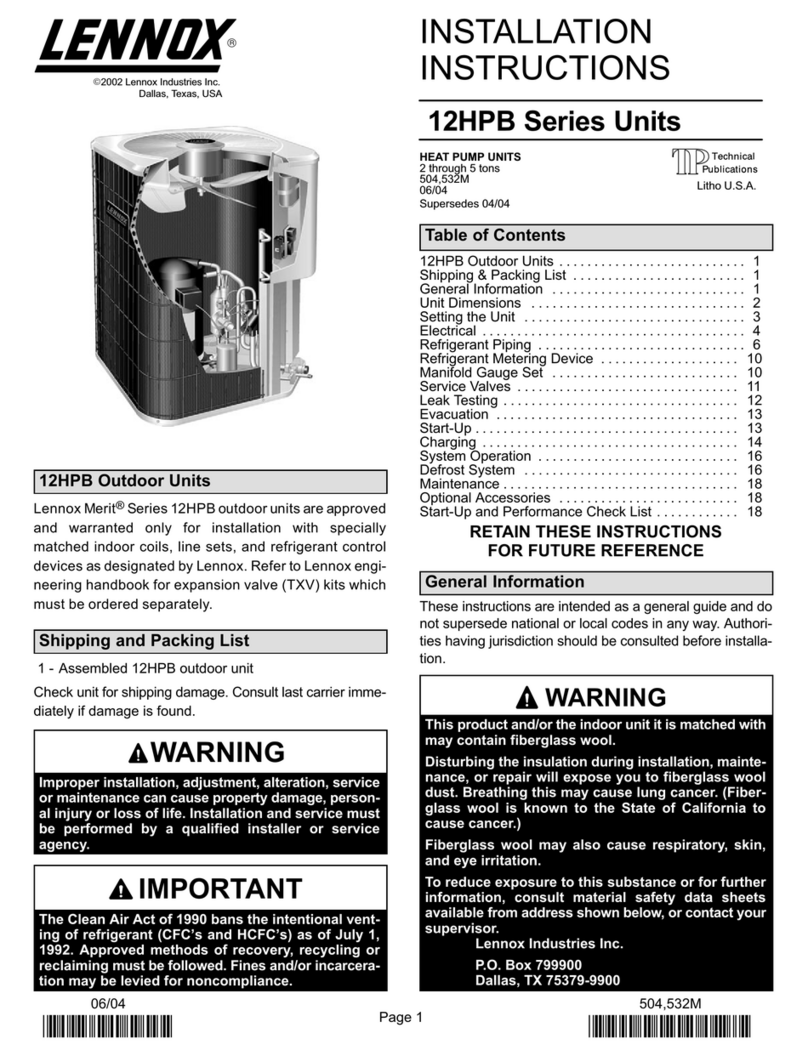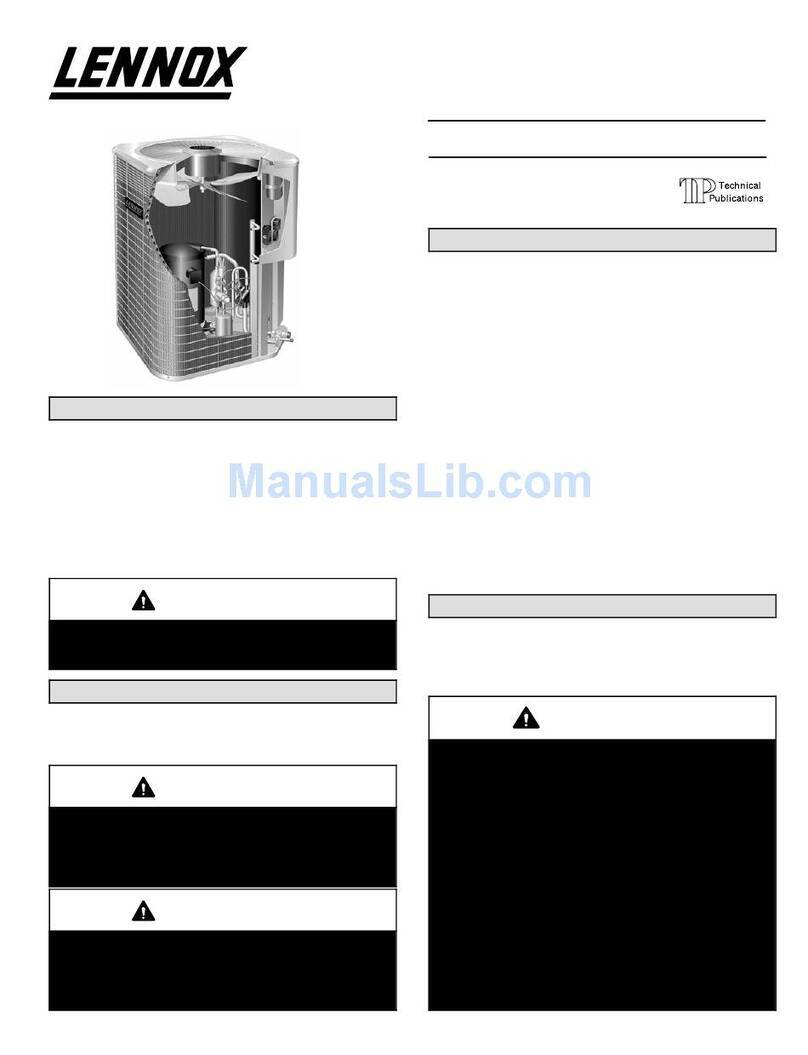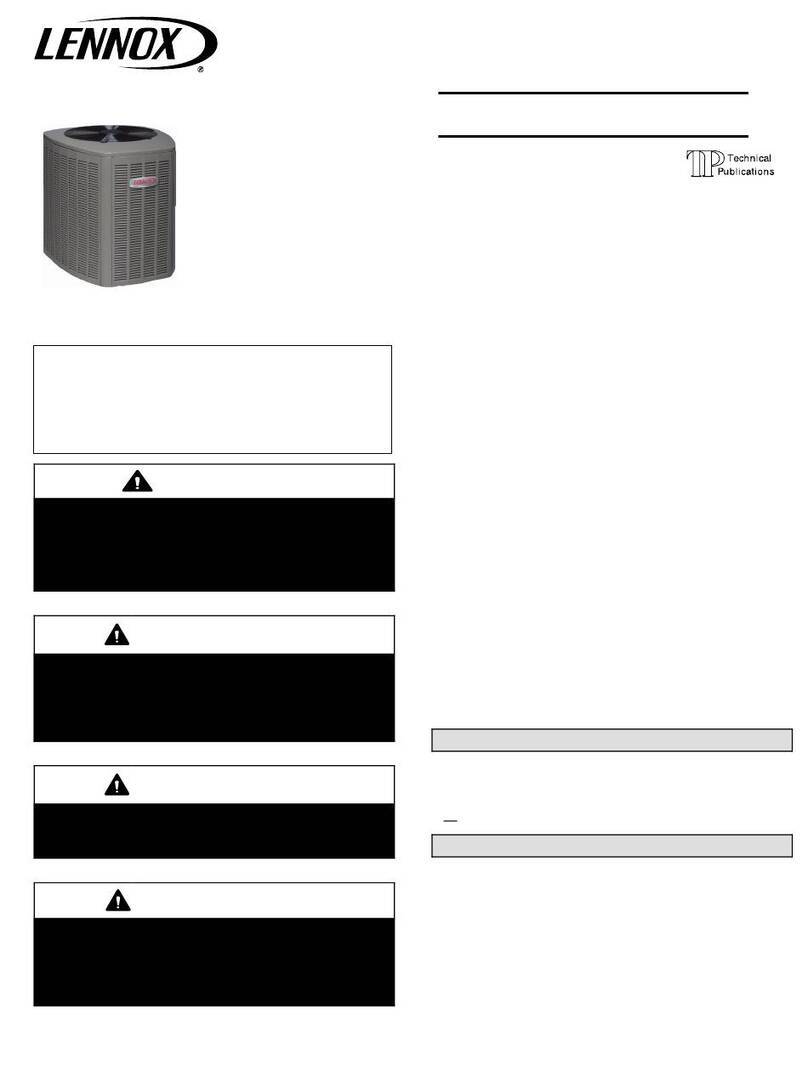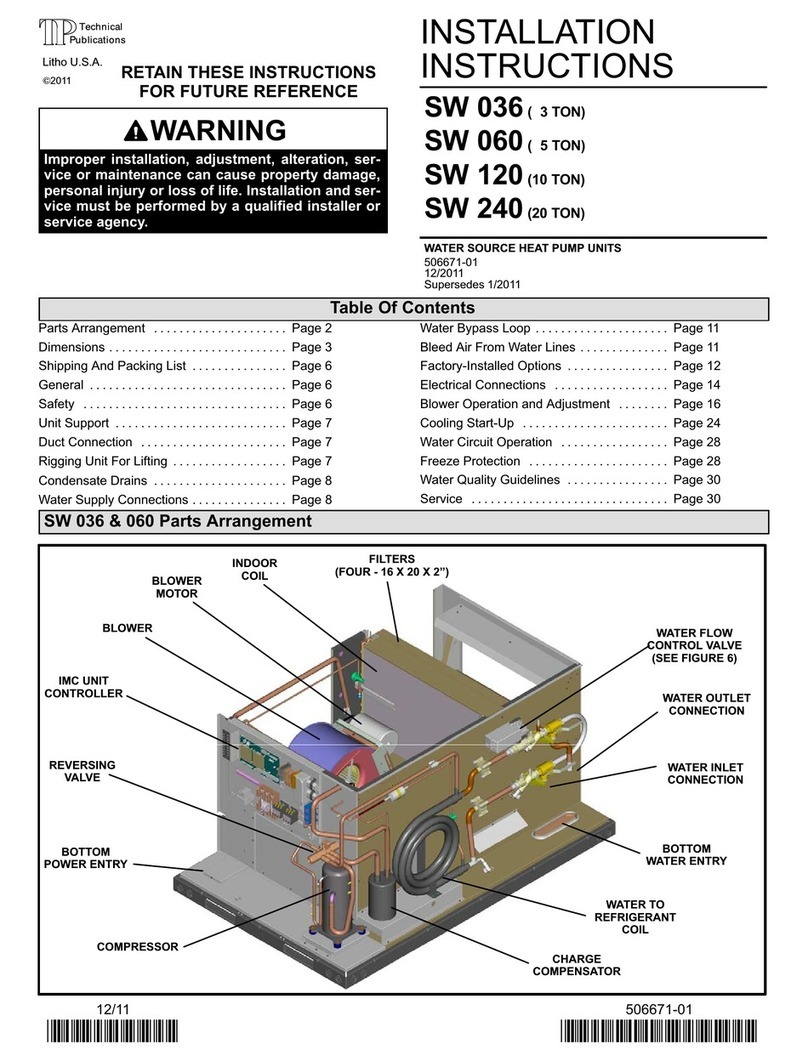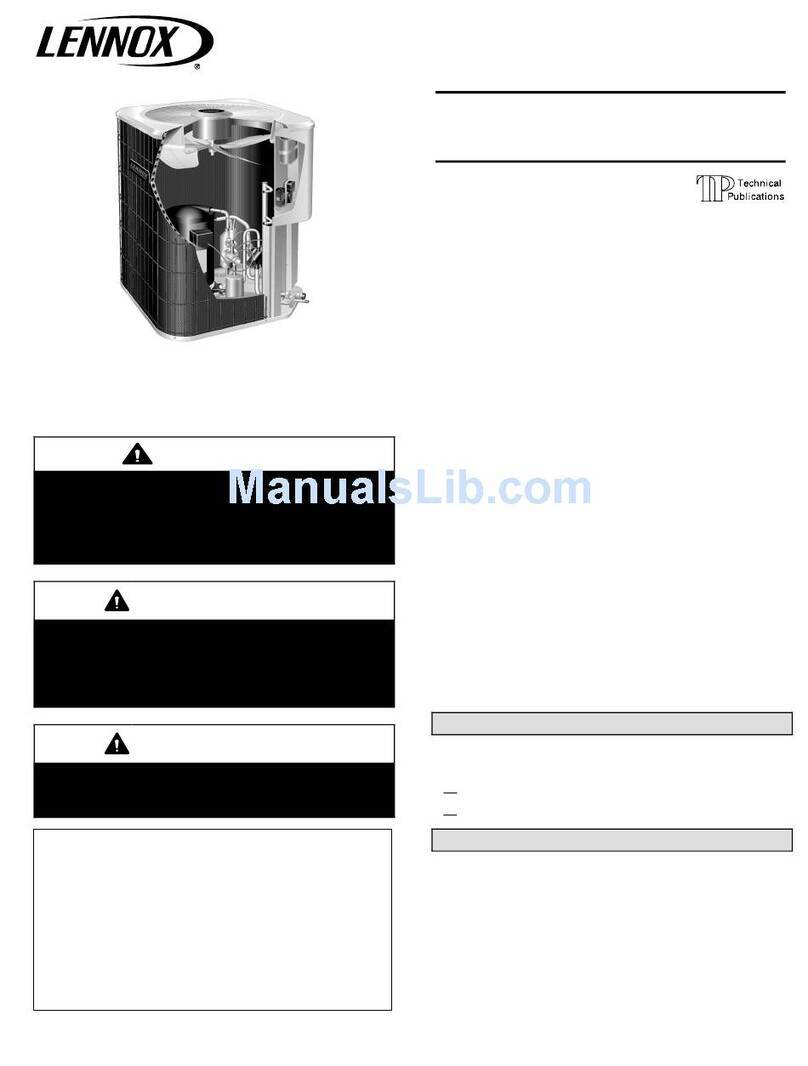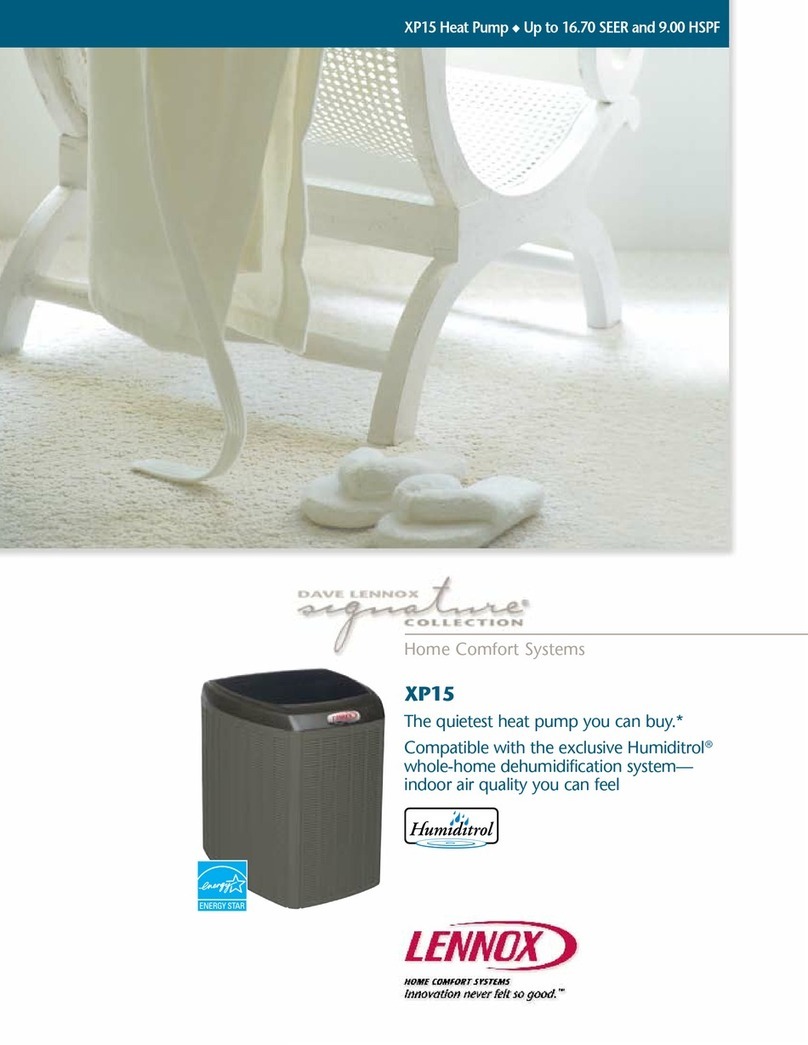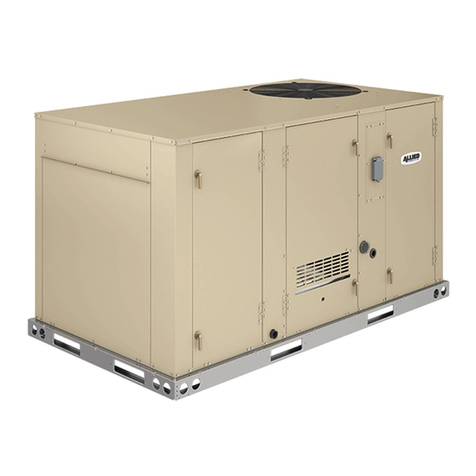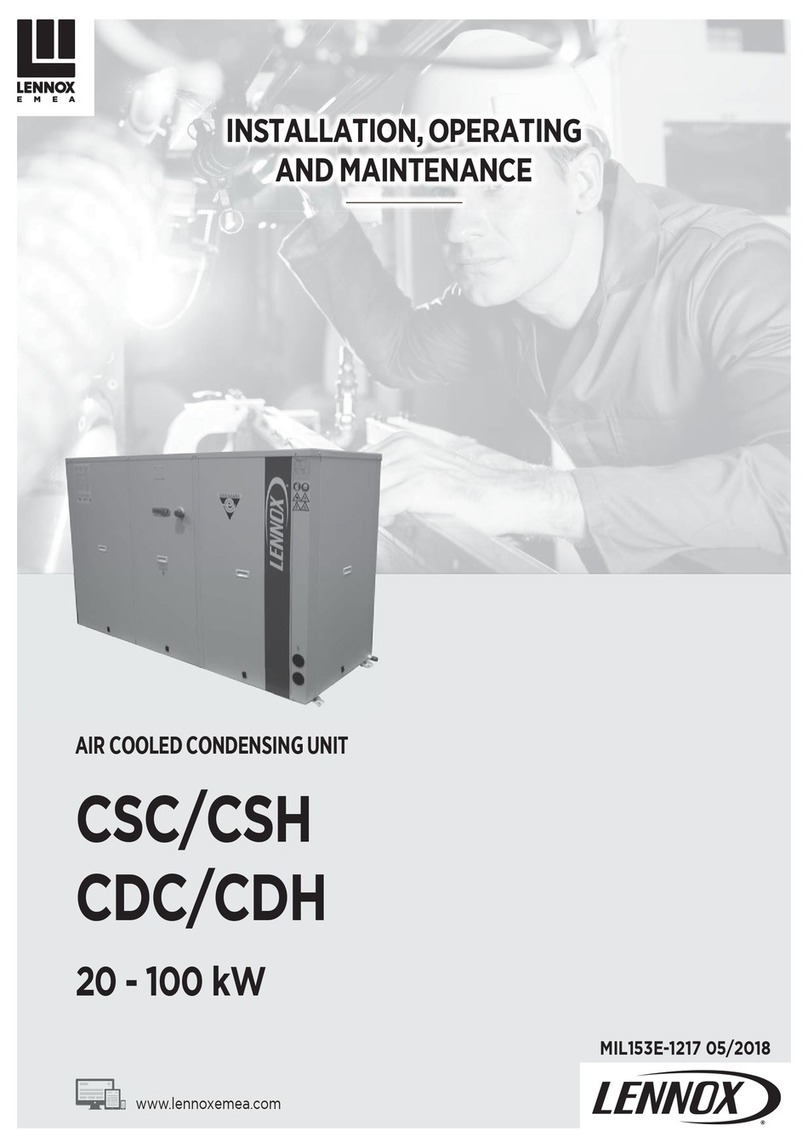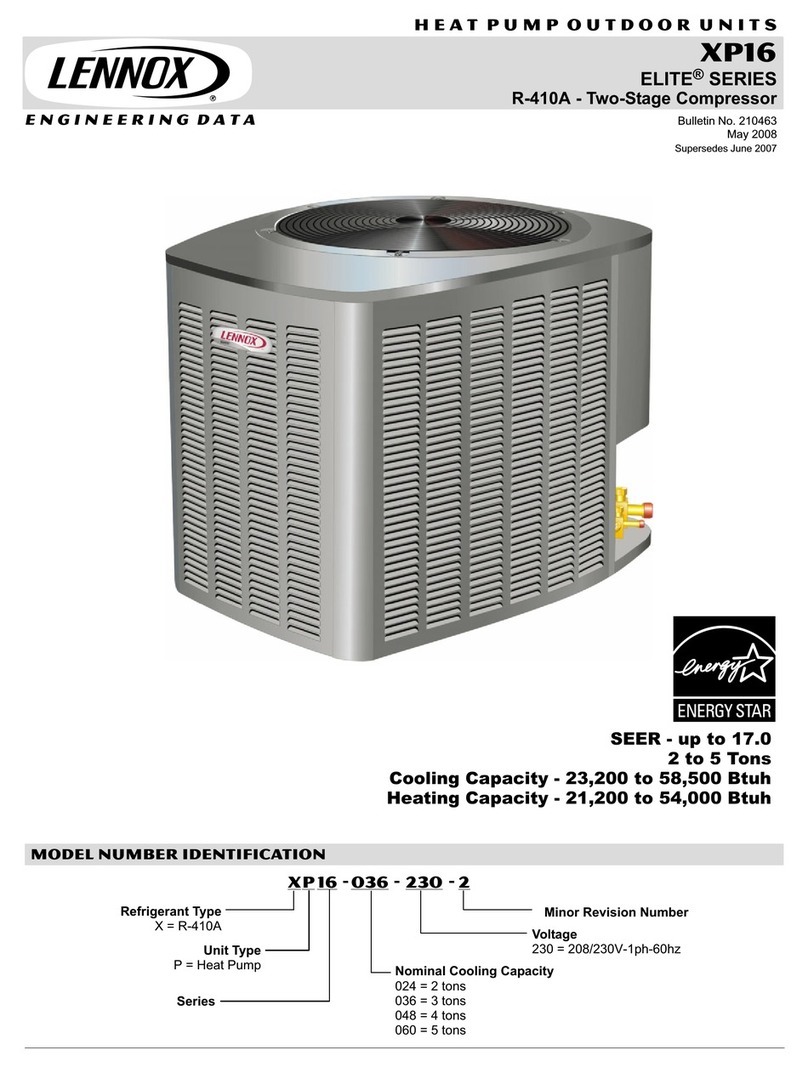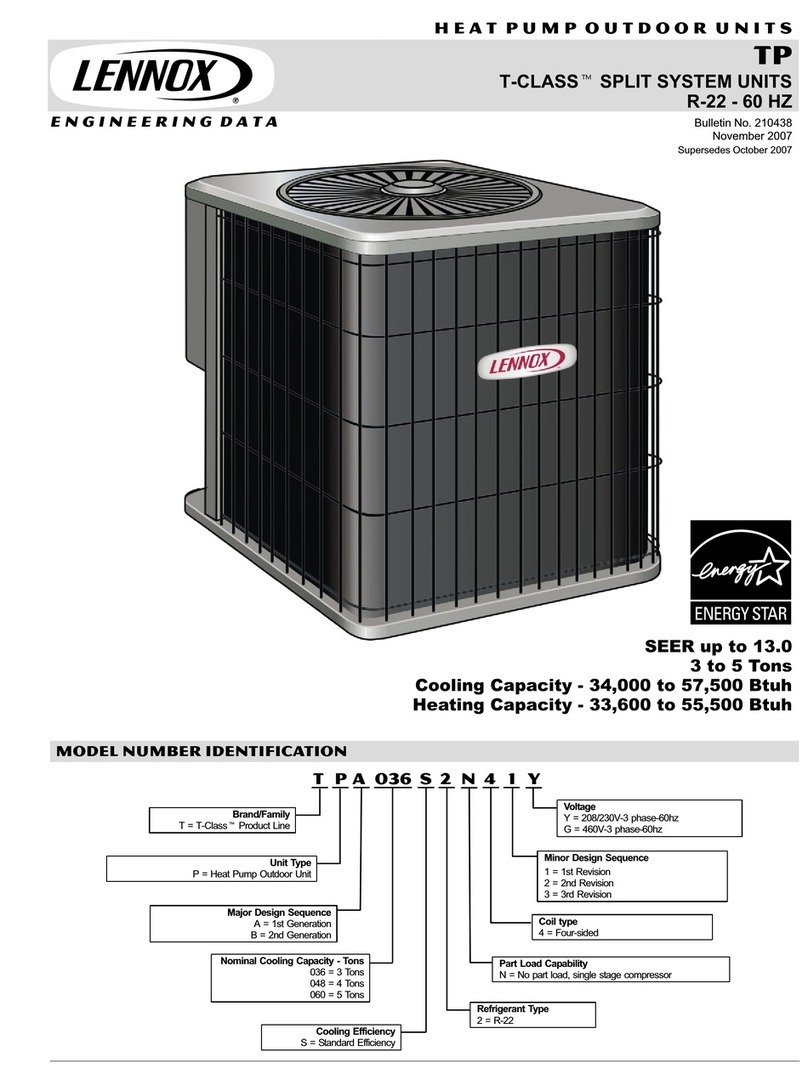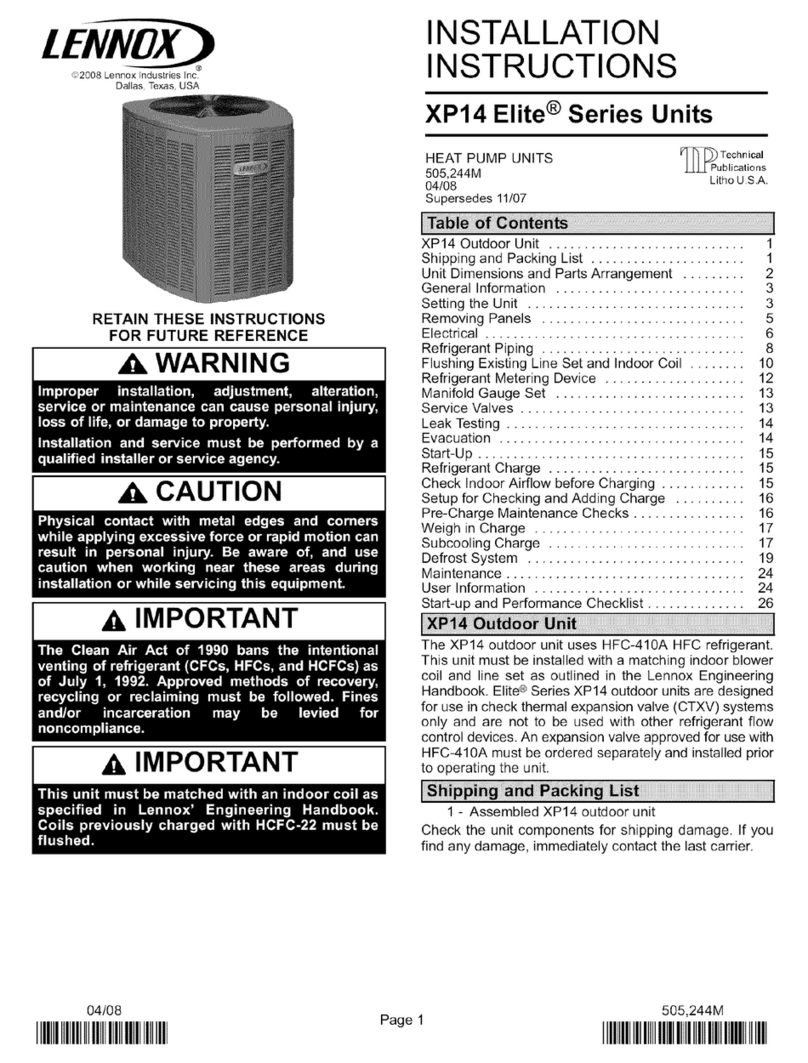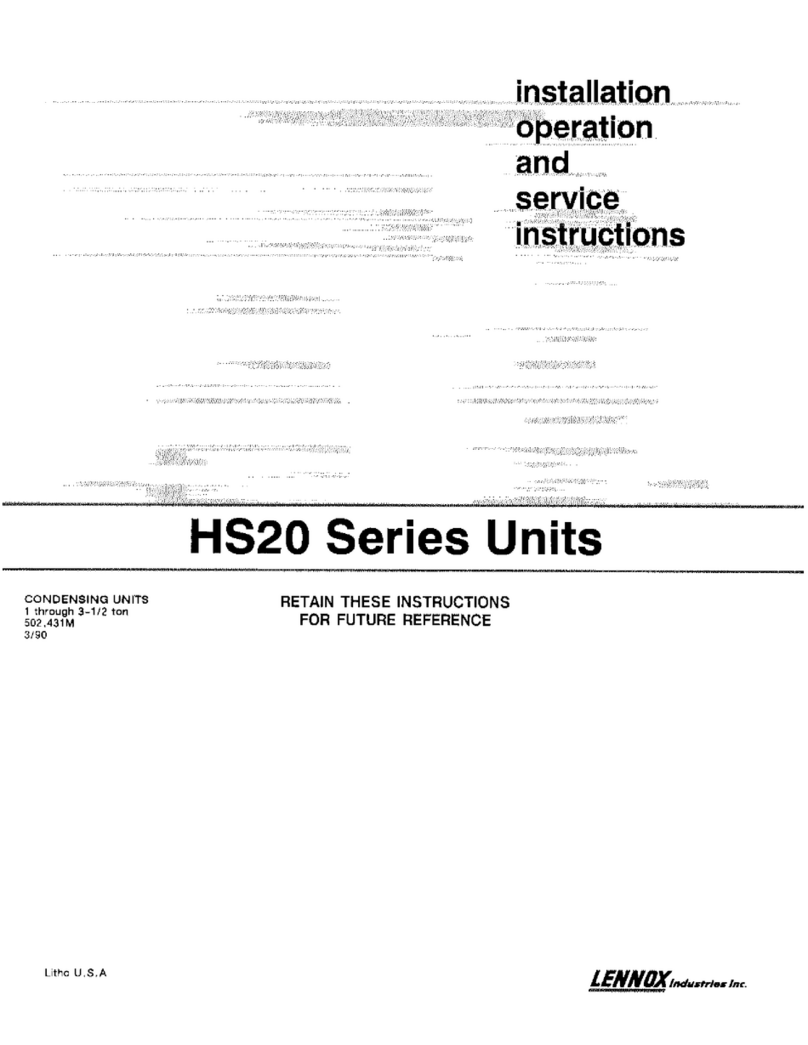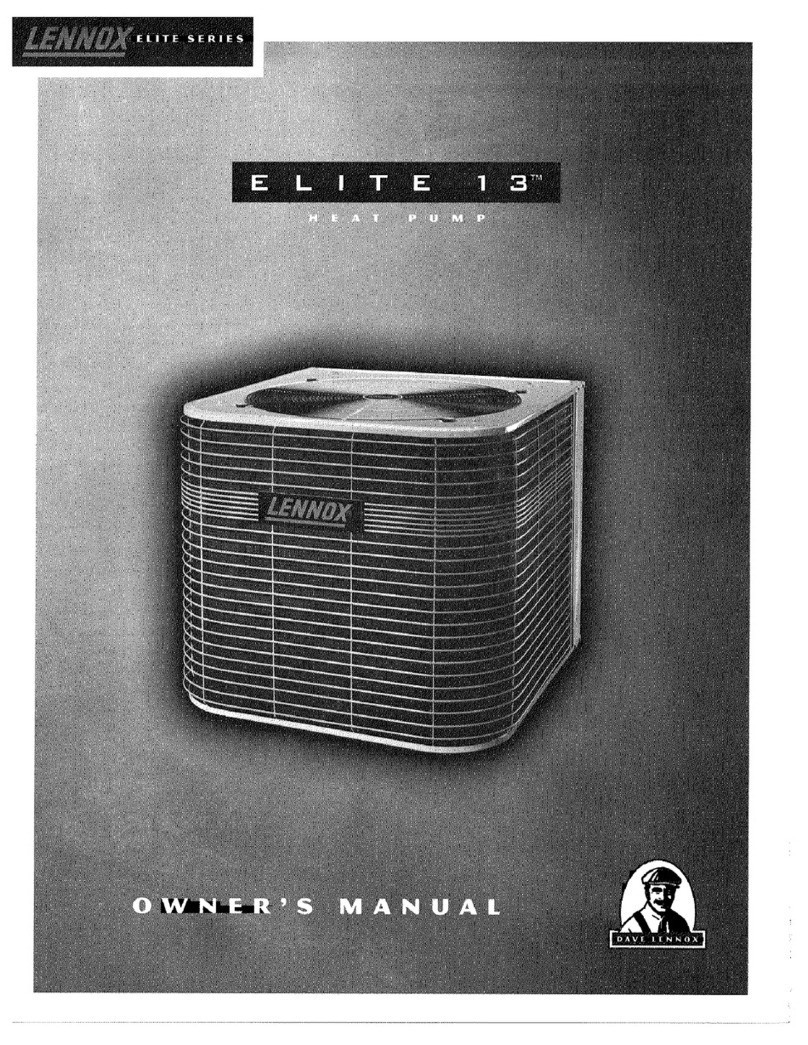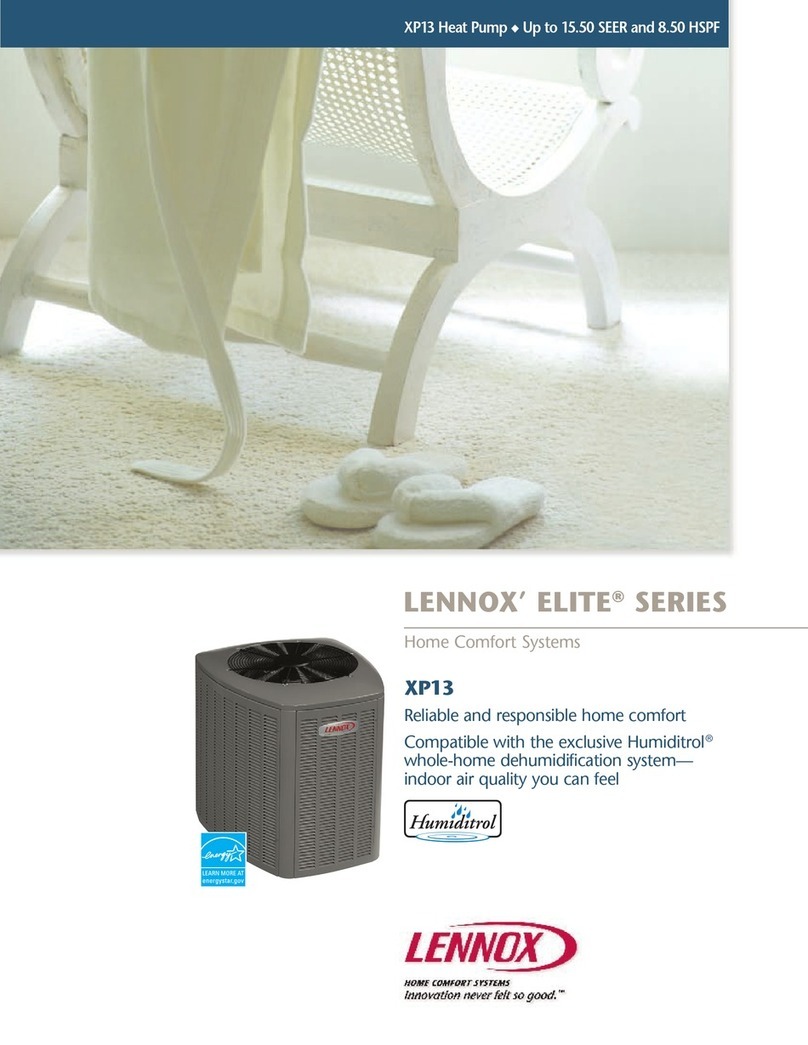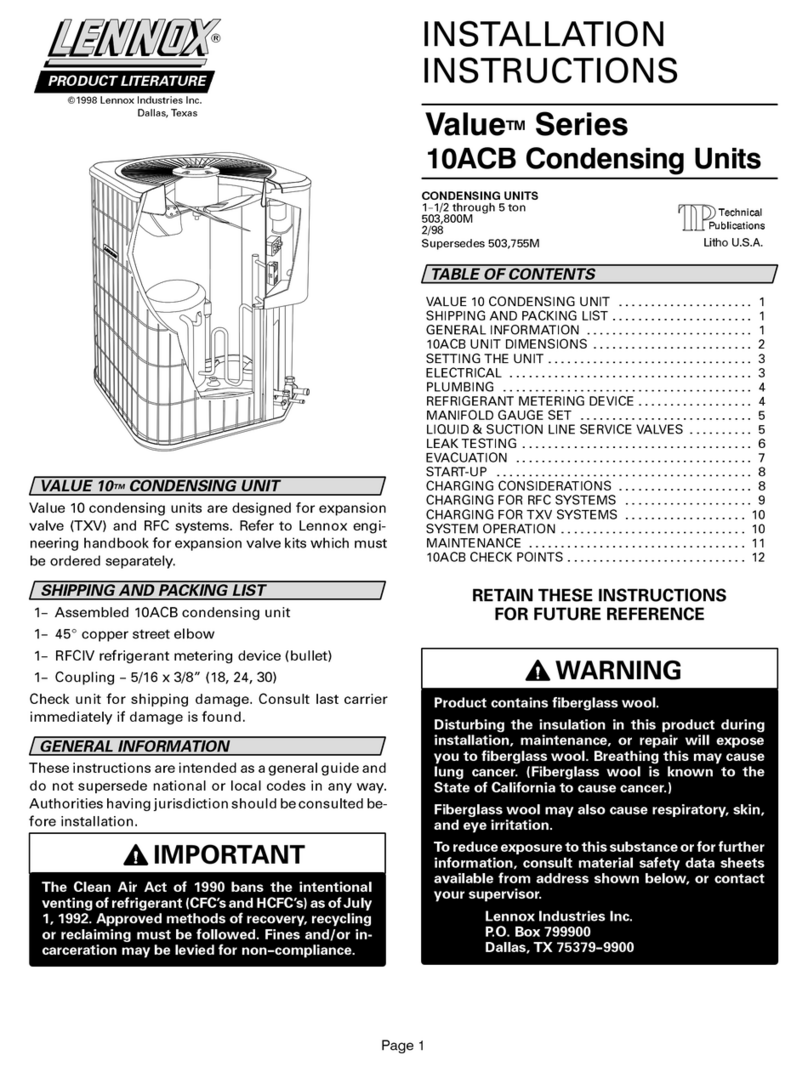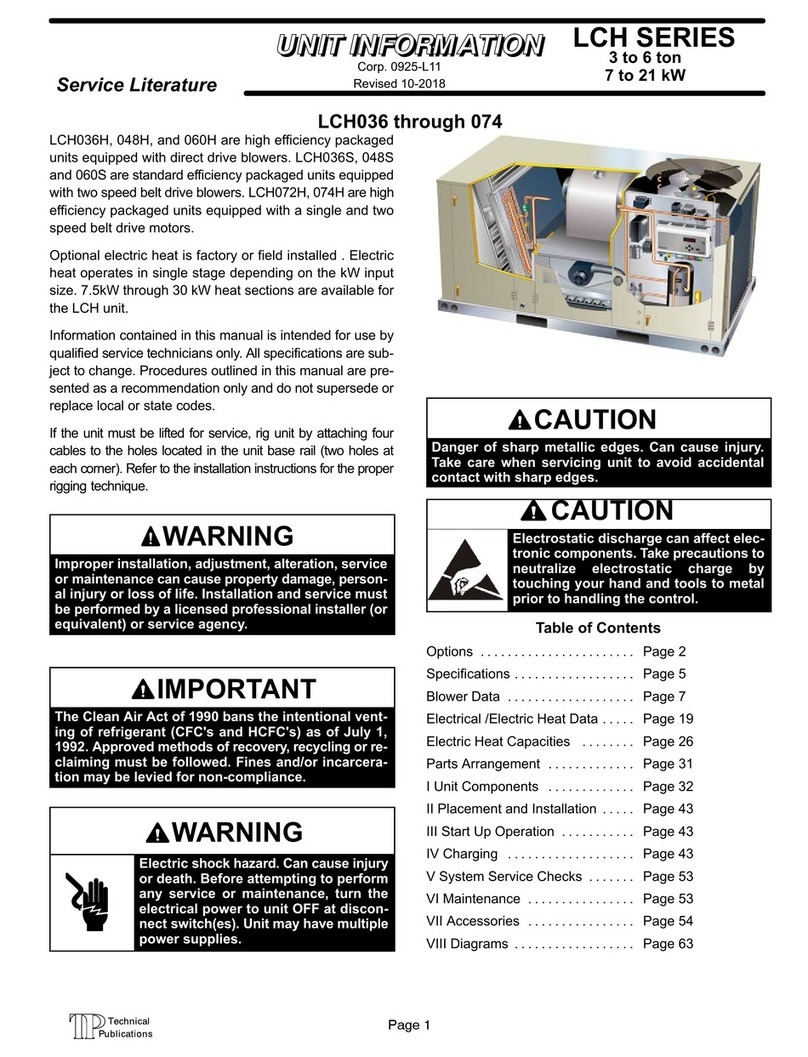Page 7
NOTE − The 30 second off cycle is NOT functional when
jumpering the TEST pins.
Operational Description
The defrost control has three basic operational modes:
normal, calibration, and defrost.
Normal ModeThe demand defrost control monitors the
O line, to determine the system operating mode (heat/
cool), outdoor ambient temperature, coil temperature (out-
door coil) and compressor run time to determine when a
defrost cycle is required.
Calibration ModeThe control is considered uncali-
brated when power is applied to the control, after cool
mode operation, or if the coil temperature exceeds the ter-
mination temperature when it is in heat mode.
Calibration of the control occurs after a defrost cycle to en-
sure that there is no ice on the coil. During calibration, the
temperature of both the coil and the ambient sensor are
measured to establish the temperature differential which is
required to allow a defrost cycle. See figure 8 for calibration
mode sequence.
Defrost ModeThe following paragraphs provide a de-
tailed description of the defrost system operation.
Detailed Defrost System Operation
Defrost CyclesThe demand defrost control initiates a
defrost cycle based on either frost detection or time.
SFrost DetectionIf the compressor runs longer than
34 minutes and the actual difference between the clear
coil and frosted coil temperatures exceeds the maxi-
mum difference allowed by the control, a defrost cycle
will be initiated.
IMPORTANT − The demand defrost control will allow a
greater accumulation of frost and will initiate fewer de-
frost cycles than a time/temperature defrost system.
STimeIf 6 hours of heating mode compressor run time
has elapsed since the last defrost cycle while the coil
temperature remains below 35°F (2°C), the demand
defrost control will initiate a defrost cycle.
ActuationWhen the reversing valve is de−energized, the
Y1 circuit is energized, and the coil temperature is below
35°F (2°C), the board logs the compressor run time. If the
board is not calibrated, a defrost cycle will be initiated after
34 minutes of heating mode compressor run time. The con-
trol will attempt to self−calibrate after this (and all other) de-
frost cycle(s).
Calibration success depends on stable system tempera-
tures during the 20−minute calibration period. If the control
fails to calibrate, another defrost cycle will be initiated after
45 minutes (90 minutes −1 to −4 boards) of heating mode
compressor run time. Once the defrost board is calibrated,
it initiates a demand defrost cycle when the difference be-
tween the clear coil and frosted coil temperatures exceeds
the maximum difference allowed by the control OR after 6
hours of heating mode compressor run time has been
logged since the last defrost cycle.
NOTE − If ambient or coil fault is detected, the control will
not execute the TEST" mode.
TerminationThe defrost cycle ends when the coil tem-
perature exceeds the termination temperature or after 14
minutes of defrost operation. If the defrost is terminated by
the 14−minute timer, another defrost cycle will be initiated
after 34 minutes of run time.
Test ModeWhen Y1 is energized and 24V power is be-
ing applied to the control, a test cycle can be initiated by
placing the termination temperature jumper across the
Test" pins for 2 to 5 seconds. If the jumper remains across
the Test" pins longer than 5 seconds, the control will ignore
the test pins and revert to normal operation. The jumper will
initiate one cycle per test.
Enter the TEST" mode by placing a shunt (jumper) across
the TEST" pins on the control after power−up. (The
TEST" pins are ignored and the test function is locked out if
the shunt is applied on the TEST" pins before power−up).
Control timings are reduced, the low−pressure switch is ig-
nored and the control will clear any active lockout condi-
tion.
Each test pin shorting will result in one test event. For
each TEST" the shunt (jumper) must be removed for at
least 1 second and reapplied. Refer to flow chart (figure 7)
for TEST" operation.
Note: The Y1 input must be active (ON) and the O" room
thermostat terminal into board must be inactive.
Defrost Control Diagnostics
See table 2 to determine defrost control operational condi-
tions and to diagnose cause and solution to problems.

